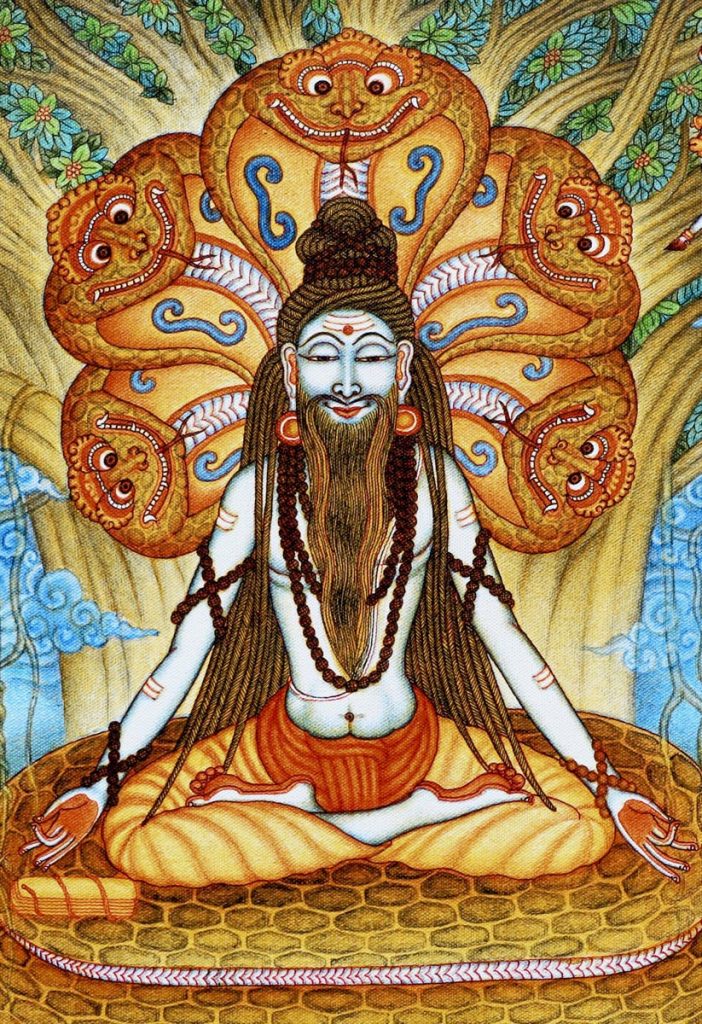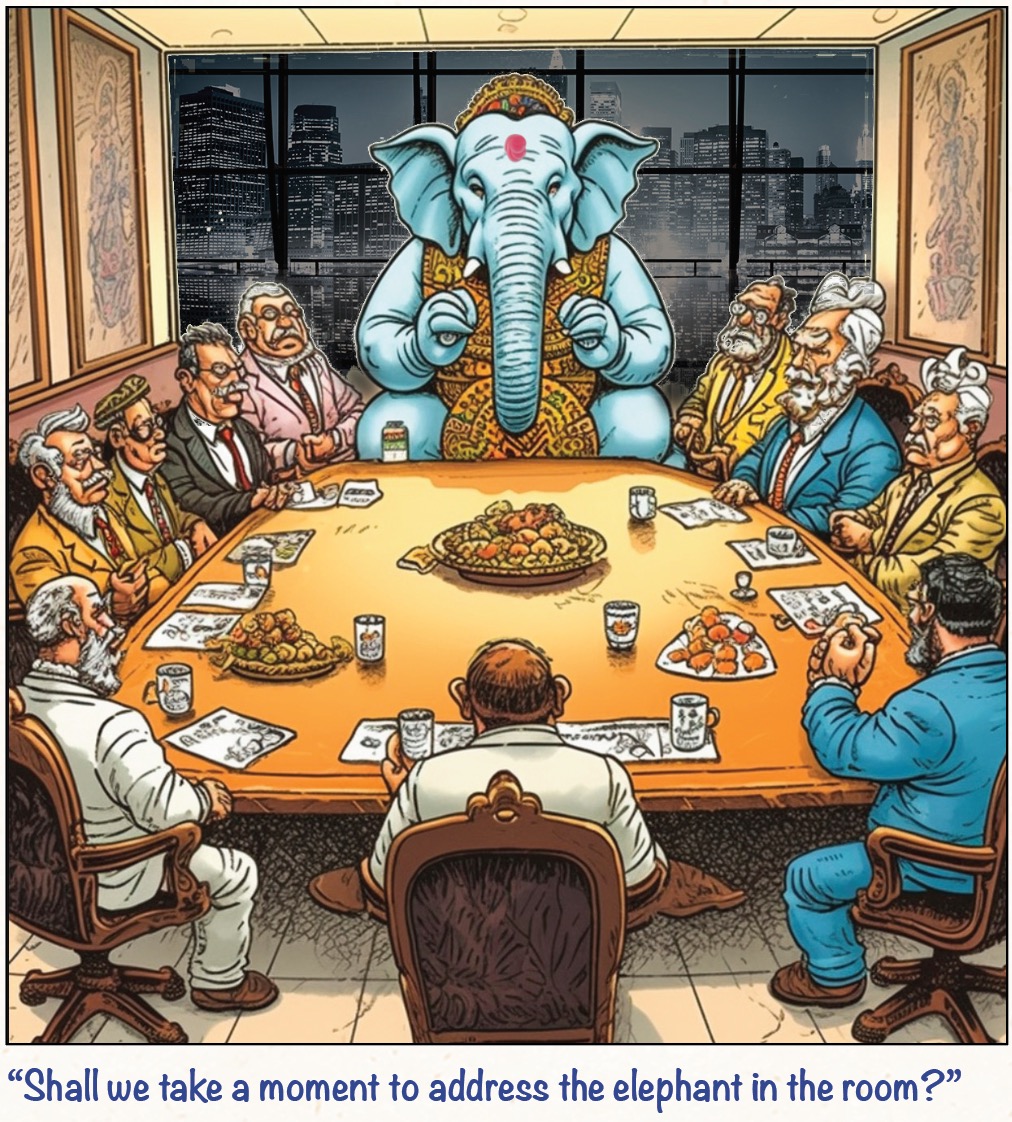“To listen to some devout people, one would imagine God never laughs.” Sri Aurobindo (1872-1950)
Let what comes come. Let what goes go. Find out what remains. Sri Ramana Maharshi (1879-1950)
A successful man is one who can lay a firm foundation with the bricks that others throw at him. Swami Chinamayananda (1916-1992), founder of the Chinmaya Mission
In the midst of great joy do not promise anyone anything. In the midst of great anger do not answer anyone’s letter. Chinese proverb
There is no treasure equal to contentment and no virtue equal to fortitude. Sarada Devi (1853-1920)
Black holes are where God divided by zero. Albert Einstein (1879-1955)
Worrying about something is like paying interest on a debt you don’t even know if you owe. Mark Twain
The one who plants trees, knowing that he will never sit in their shade, has at least started to understand the meaning of life. Rabindranath Tagore (1861-1941)
The more sand has escaped the hourglass of our life, the clearer we should see through it. Niccolo Machiavelli (1469-1527), Italian diplomat
Vision without action is a daydream. Action without vision is a nightmare. Japanese proverb
God is the creator, and the best way of offering prayer to Him is to be creative. God is all loving, and the best way to serve Him is to serve humanity. Swami Dayananda Saraswati (1825-1883)
The downfall of a religious sect begins from the day that the worship of the rich enters into it. Swami Vivekananda (1863-1902)
He creates the Universe, then reveals Himself to us and in us. He made Himself manifest. Guru Granth Sahib
If you really wish to evolve spiritually, you should at once make a start and pursue a regular and steady course of sadhana. Swami Sivananda (1887-1963)
I traveled a long way seeking God, but when I finally gave up and turned back, there He was, within me! Lalleshwari (1320-1392) Kashmiri mystic poet
Science sometimes runs the risk of not seeing the truth, because it does not want to know about miracles. Jacques Cousteau (1920-1297) explorer, oceanographer and filmmaker
If you own something you cannot give away, then you don’t own it. It owns you. Albert Schweitzer (1875-1965), Alsatian-German philosopher
A physicist is just an atom’s way of looking at itself. Niels Bohr (1885-1962), Danish physicist
Destiny’s last days may surge with oceanic change, yet perfectly good men remain, like the shore, unchanged. Tirukural 989
We need the devotional practice of religion so that the philosophy doesn’t make us even more proud or arrogant than we were before we studied it. Satguru Bodhinatha Veylanswami, publisher of Hinduism Today
For me, true free will means the dharmic will that is divine and guided by the superconscious. In reality, only this kind of will makes you free. Satguru Sivaya Subramuniyaswami (1927-2001), founder of Hinduism Today
Did You Know?
The Present Can Affect the Past
The field of quantum mechanics has long been a source of fascination and puzzlement, with its seemingly counterintuitive principles defying our everyday understanding of the world. Hindu philosophy has long discussed the idea that underlying reality is a Divine epicenter, existing in timelessness, as well as the idea that our state of awareness is foundational to the experience of our reality. These and other ideas offer insights that resonate with some of the phenomena seen in quantum physics today. One such example is the peculiar behavior of light, which exhibits both wave-like and particle-like properties depending on how it is observed. The double-slit experiment provides a striking illustration of this duality. However, an even stranger phenomenon arises when observation seems to influence past events, as suggested by physicist John Wheeler’s delayed-choice experiment.
In the experiment, light is directed toward a barrier containing two narrow slits, with a screen placed behind it to capture the resulting pattern. When the slits are unobserved, the light behaves as a wave, creating an interference pattern on the screen, suggesting that it passed through both slits simultaneously. However, when the experimenter observes which slit the light passes through, the light behaves as a particle, and the interference pattern disappears, indicating that the light went through one of the slits only. This remarkable demonstration of wave-particle duality raises questions about the role of observation in shaping the behavior of subatomic particles, hinting that reality might be more malleable than previously believed.


In 1978, John Wheeler proposed an intriguing thought experiment, which was later carried out in 2007, to further explore the relationship between observation and reality. The delayed-choice experiment involves waiting until the light has passed through the slits before deciding whether or not to observe which slit the light went through. Astonishingly, the act of observing the light after it has passed through the slits retroactively forces it to have behaved as a particle, as if the present observation influences the past behavior of the light. This phenomenon is known as backward causality.
Though the effects of backward causality are observed over minuscule time frames in laboratory settings, Wheeler postulated that it could have implications on a cosmic scale. He theorized that light from distant stars, bending around gravitational wells, might also be subject to similar observation-induced changes. Consequently, observing a phenomenon today could potentially alter events that occurred thousands or even millions of years in the past. Wheeler himself rejected this possibility, but the entire concept has fascinated scientists for decades, and no one has proven it impossible.
Basics
What Are the Goals of Renunciate Life?


Certain people are by nature inclined toward realization of the Self, and disinclined toward desires of family, wealth and property. Some among them are sadhus dressed in white. They are anchorites living in the seclusion of distant caves and remote forests or wandering as homeless mendicants, itinerant pilgrims to the holy sanctuaries of Hinduism. Others dwell as cenobites assembled with fellow monastics, often in the ashrama, aadheenam or matha of their satguru. These monks, both anchorite and cenobite, may live with no formal vows or take certain simple vows. When initiated into the order of sannyasa, they don the saffron robes and bind themselves to a universal body of Hindu renunciates whose existence has never ceased. Scriptural doctrine states that the two paths, householder and renunciate, are distinct in their dharmas and attainments, affirming that true renunciation may not be achieved by those in the world even by virtue of a genuine attitude of detachment.
The two fundamental objectives of sannyasa are to promote the spiritual progress of the individual, bringing him into God Realization, and to protect and perpetuate the religion through his illumined leadership.
Renunciation and asceticism have been an integral component of Vedic culture from the earliest days, the most highly esteemed path of the Hindu Dharma. Monastic life has both an individual and a universal objective. At the individual level, it is a life of selflessness in which the monastic has made the supreme sacrifice of renouncing all personal ambition, all involvement in worldly matters, that he might direct his consciousness and energies fully toward God. Guided by the satguru along the sadhana marga, the initiated sannyasin unfolds through the years into deeper and deeper realizations. Ultimately, if he persists, he comes into direct knowing of Parabrahma, Transcendent Reality. At the universal level, Hindu monasticism fosters the religion by preserving the truths of the Sanatana Dharma. Competent swamis are the teachers, the theologians, the exemplars of their faith, the torchbearers lighting the way for all. The ancient Vedas elucidate, “The ascetic who wears discolored robes, whose head is shaved, who does not possess anything, who is pure and free from hatred, who lives on alms, he becomes absorbed in Brahman.”
Drawn from the teachings of Satguru Sivaya Subramuniyaswami


